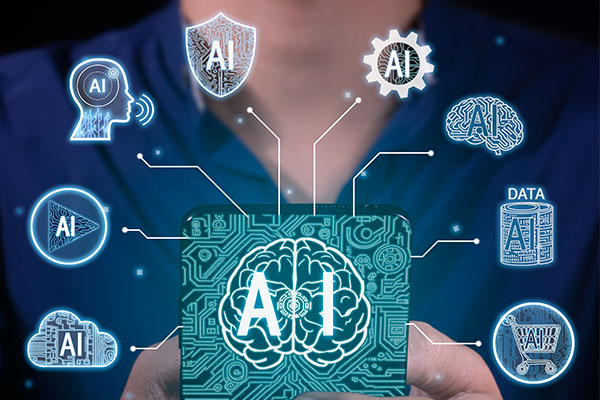As we look around, every aspect of our lives is quickly being reshaped by artificial intelligence (AI), and our legacy 9-1-1 network could benefit greatly. AI is opening new doors, and as it continues to evolve, so will our systems, which is the beauty of the IP-based network. In this blog, we’ll dive into the ways AI could revolutionize the upgrade to NG9-1-1 enhancing emergency response capabilities, improving situational awareness, empowering call-takers to quickly handle situations and, thus, saving more lives.

The machine learning algorithms in AI can analyze large volumes of data, which is exactly what NG9-1-1 needs. All calls, text messages, and videos could be organized and analyzed so the dispatcher can prioritize and allocate resources. AI can also extract valuable information from communication and provide quick insights to first responders. This would allow for faster, more informed decisions.
The ability to identify patterns and predict incidents is a huge benefit of AI and one the upgrade to NG9-1-1 could take advantage of in the near future. With access to data sources such as surveillance cameras, sensors, social media, and others, we would be able to proactively identify emergencies, even before they are reported. If the data shows something is brewing, 9-1-1 would be called swiftly. This preemptive response could potentially prevent emergencies from happening.
AI can process large amounts of data in real-time. This means that a 9-1-1 call dispatcher receives information as it is coming in, and can start making decisions seconds faster. This is especially helpful when people are using real-time text. All of the data is then collected and displayed on intuitive dashboards, which allows emergency responders to understand evolving situations and adapt their plan of action.
It may not be far off until we see AI-powered chatbots and voice recognition systems that can handle a significant volume of non-emergency calls, providing valuable information and guidance to callers. These systems can offer instructions, safety tips, and other relevant information while automatically transferring critical cases to call dispatchers. AI-powered language translation capabilities can also bridge language barriers, ensuring effective communication for all callers.
Let’s take a closer look at AI from the call taker perspective. By adapting to AI technologies, algorithms can be trained to recognize specific keywords. For example, it would identify “shooting,” “rape,” or “fire” in distress calls or texts. Once these keywords are detected, relevant information and resources can be automatically presented to the call taker, enabling them to respond swiftly and efficiently. With this automated process, precious seconds can be shaved off each call, and in emergency situations, every second truly counts.
Our world is undergoing a revolutionary transformation, thanks to AI, and NG9-1-1 systems could absolutely benefit. The ability to analyze vast amounts of data, predict incidents, and provide real-time insights empowers emergency responders to be confident in their actions. As AI continues to evolve, we can anticipate even greater advancements in NG9-1-1. Therefore, further strengthening our emergency services and ensuring the safety of our communities. Contact our Synergem team to understand more about how AI may play a role in your upgrade to NG9-1-1.